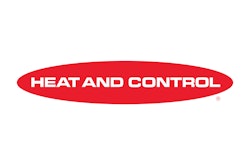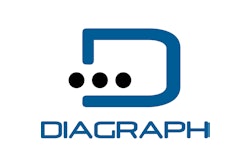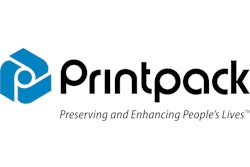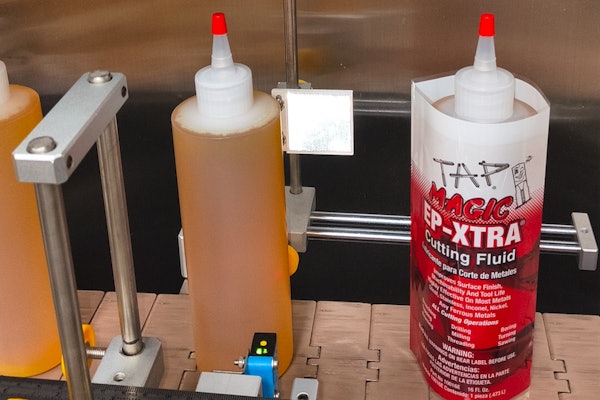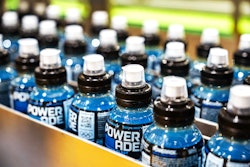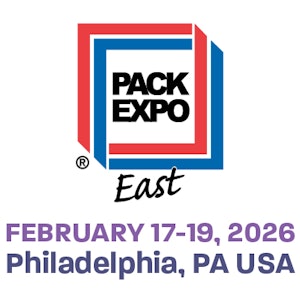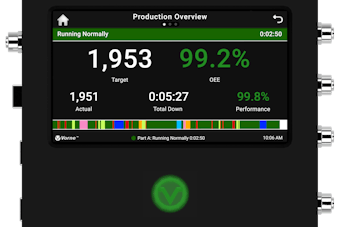Robust sales of 1- to 3-oz bags of snacks led snack maker Poore Brothers to purchase two new vertical form/fill/seal machines for use at its 145ꯠ-sq’ plant in Bluffton, IN. Installed into the former Keebler plant in early 2003, the Heat and Control Atlas-brand bagmakers operate at three times the speed of the equipment they replaced.
“The acquisition of the high-speed machines was driven by a nice vending business,” confirms Glen Flook, Poore Brothers’ senior vice president of operations. “Business growth created a need for additional capacity. At the time, we were running some ’80s-vintage machines,” he recalls. “They were capable of about 60 bags per minute, but we usually ran at 45 bags a minute. With the new machines, we’re getting about three times the speed.”
A key reason for the added output “is that these new units are continuous-motion machines,” contends Don Addington, the company’s R&D/Co-pack manager. “The previous fillers were intermittent-motion machines. We had issues with sealing and cutting with the intermittent-motion action.” Part of the problem was temperature inconsistencies from the top to the bottom along the back seal. The continuous-motion Atlas machines provide more constant temperatures and pressures when creating the back seal, so that’s no longer a problem.
Higher speeds, says Flook, also mean “one machine does the job of three, without additional labor costs, without the need for extra conveyors, and in much less space,” eliminating the need to increase the size of the plant’s packaging area. “Building costs are expensive,” he says. “There’s not only the big financial cost [to add space], but capital expansions cause interruptions and downtime.”
Improving operations
The latest Atlas machines give the plant 11 vf/f/s machines, eight of which have been added within the past three years as part of a company focus on improving capacity and efficiency. Goodyear, AZ-based Poore Brothers’ business objective is to be a leading developer, manufacturer, marketer, and distributor of innovative branded snack foods. Among its “Intensely Different” brands, as the company calls them, are T.G.I.Friday’s Tato Skins and, most recently, Crunch Toons. The latter is a result of a multi-year licensing agreement that permits Poore Brothers to use Warner Brothers’ Looney Tunes cartoon characters.
The latest machines run on a three-shift operation, five to seven days per week depending on production demands. “The two machines run so effectively on smaller bags that we dedicated the equipment to run those sizes,” says Flook.
From three separate fryers, snacks are carried along a product handling system that includes about 50 of Heat and Control’s FastBack® horizontal-motion conveyors. “They work in a slow-forward, fast-back motion, and we’ve been ecstatic about them,” says Flook. The FastBack motion helps prevent the loss of expensive seasoning, which is added just after snacks come out of the oven. They also help reduce product breakage.
“Before we had vibrating conveyors that would just shake the product,” explains Addington. “The seasoning was building up on the conveyors, and we had to stop and scrape off the seasoning. The movement of the FastBack doesn’t cause seasoning to shake off, so there’s a big difference. With these conveyors, we only have to clean them when we change flavors,” he says.
During a visit to the plant, Packaging World asked Poore Brothers what economic savings the conveyors provide, but the snack maker didn’t track specific dollar figures for seasoning loss. However, Addington does say seasoning costs between $2 and $5 per lb.
A new Heat and Control seasoning applicating system, he says, “automatically adjusts the seasoning it adds to match the poundage of snacks going into a tumbler.” This takes place just downstream of one of the plant’s three fryers, just before packaging. Often, seasoning is done just before snacks reach a scale system.
From seasoning, FastBack conveyors transport snacks along three parallel “lanes” positioned on a mezzanine level above all 11 vf/f/s machines. Specifically, these three lanes feed snacks to perpendicular FastBack cross-feeder conveyors, one per each of the vf/f/s machines.
Weighing, vf/f/s
Each cross-feeder transfers snacks gently to the radial feeders of each 14-head Ishida Millennium™ weigher from Heat and Control. Snacks are fed into top pooling hoppers that discharge into weigh hoppers immediately below. Individual load cells measure the weight of product in each hopper. Integrated controls are used to select the right combination of buckets to release an accurate amount, or charge of product, to the vf/f/s bagmaker.
“We used Ishida scales with our older machines as well,” says Addington. “So there’s not really a change with product giveaway” compared with the new vf/f/s machines. “We’ve used the scales from the get-go because we’ve always liked their weight controls and reliability.”
According to Heat and Control, the scale discharge angles are optimized to accelerate product discharge. This allows multiple charges in flight to help Poore Brothers attain speeds up to 150 bags/min. Scales dump snacks into a tube of film that’s heat sealed at the bottom. The nearly 2-mil film is supplied by Printpack. The structure includes an outer 70-ga layer of coextruded oriented polypropylene/7# extrudate/70-ga metallized coextruded OPP. Printpack reverse-prints the outer layer in eight colors on a flexo press.
“We buy all our packaging film from Printpack,” says Flook. “We value relationships more than we do redundant suppliers. We have a great relationship with the folks at Printpack. At the end of the day, they offer us a quality product with great customer service at a competitive price. That’s what’s important to us,” he states.
The metallized polypropylene layer helps provide a shelf life of 140 days for the bags. Another important aspect of the structure, says Addington, “is its Surlyn sealant coating that helps filled packs withstand the rigors of high-altitude shipping over the mountains for West Coast delivery.”
As film unwinds, it passes by a Norwood Jaguar II thermal-transfer coder that applies a Julian date code, the appropriate fry line number, and the packaging machine number. Film moves over a forming collar and is heat-sealed along the back to form a tube utilizing a continuous seam seal band that provides an “ironing effect” on the back seal.
The continous-motion Atlas bagmaker uses patented twin heat-sealing jaws that simultaneously seal the top of the leading pack and the bottom of the subsequent pack. According to Heat and Control, the twin jaws’ D-shaped motion profile creates a long dwell time that creates reliable seals. An orbital slicing knife cuts in the seal area, and the leading bag is discharged from the bottom of the vf/f/s machine at a rate equivalent to 2.5 bags/sec.
The bag falls onto a dual-collating conveyor from Cantrell/A.C. Horn. “It includes a PLC that lets us program it to send 50 bags up one side of an inclined discharge conveyor,” says Flook. “As those bags are discharged, each one is counted by a photoeye. Once those 50 bags are counted, the photoeye signals the arms to alternate so that the next 50 will be diverted to the other side of the conveyor.”
Although the process does not reduce labor costs, “it allows our packers to pack at higher speeds because it makes it easier for them to pack,” adds Flook. Bags are manually placed into corrugated shipping cases, though the company expects to automate the process early this year. Cases are closed and hand-stacked on a pallet. Stretch wrapping is done automatically on older equipment. Loads are placed into a warehouse area for distribution by truck to distribution centers, primarily to vending and convenience channels.
Fast installation, too
Looking back on the decision-making process for selecting packaging equipment for the Bluffton facility, Flook says, “We had used Ishida scales before. We knew about the reputation and reliability of the Heat and Control equipment.
“And they are very good project managers,” Flook says. “All we had to do was determine the scope of the project, and they took it and ran. It’s one manufacturer and one installer we work with, not a bunch of different vendors with different pieces of equipment.”
Addington explains that the plant also took advantage of Heat and Control’s Rapid Deployment™ process. “They had the structures for the machines already built, and they sent it to us in modules. They did a marvelous job.” Flook also credits Premier Technology “for the installation in a short amount of time. It is a top-notch operation.”
Poore Brothers has been more than satisfied with the vf/f/s and scales. “With the Atlas machines, it was an issue of capacity enhancement for us, but I would tell you our payback on the equipment is less than two years.” The snack maker anticipates adding more units in the future. “We’ve been able to penetrate convenience, vend, and multipack market channels with our products,” says Flook. “And we anticipate that will continue. Therefore, we know we’ll continue to need high-speed filling equipment to meet those needs.”










